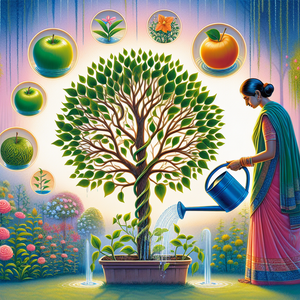The Jazz Age: Cultural Revolution Through Music

Jazz music emerged from a blend of African American musical traditions, including blues and ragtime, and quickly became a defining sound of the 1920s. The genre's improvisational nature and energetic rhythms resonated with a generation eager for freedom and expression. Notable figures such as Louis Armstrong, Duke Ellington, and Bessie Smith emerged during this period, each contributing to the evolution of jazz and its growing popularity among diverse audiences. The cultural significance of jazz extended beyond mere entertainment; it became a symbol of the Roaring Twenties' spirit of rebellion and liberation. The genre provided a voice for the African American community, allowing artists to express their experiences and emotions in a society that often marginalized them. As jazz clubs flourished in cities like Harlem, they became vital social hubs where people of different races mingled, fostering a sense of unity and cultural exchange that was revolutionary for the time. The Cotton Club, for instance, became a prominent venue featuring black performers in front of predominantly white audiences, illustrating the complex dynamics of race and entertainment in this era.
The Impact on Race Relations
The Jazz Age was notable for its complex relationship with race relations in America. Jazz music and its performers challenged the racial barriers that had long segregated society. The Harlem Renaissance, a cultural and artistic explosion centered in New York City, coincided with the rise of jazz and highlighted the contributions of African American artists to American culture. Jazz became a means of challenging racial stereotypes and advocating for civil rights. Events such as the Cotton Club, a famous jazz venue, drew diverse audiences, showcasing both black talent and the complexities of race relations. While the club perpetuated some racial stereotypes, it also provided African American artists with a platform to achieve fame and financial success. The popularity of jazz helped to break down racial barriers, as white audiences began to embrace the genre and its artists, leading to increased visibility and acceptance. Prominent figures like Louis Armstrong not only gained fame but also became cultural icons who transcended racial divides, showcasing the power of music as a unifying force. This shift in perspective was significant, as jazz became a lens through which the struggles and triumphs of the African American experience were expressed and celebrated.
Youth Culture and the Jazz Phenomenon
The 1920s also marked a significant shift in youth culture, with jazz serving as the soundtrack for a generation eager to break away from the traditions of their parents. The emergence of the "Flapper" – a symbol of the liberated woman – coincided with the rise of jazz, as young people sought to express their independence and challenge societal norms. Jazz music fueled the dance crazes of the time, with Charleston and Lindy Hop becoming synonymous with the youthful exuberance of the era. Record players and radio broadcasts made jazz accessible to the masses, allowing young people to engage with the music in their homes and at social gatherings. The rise of jazz and dance clubs provided a space for youth to socialize, express themselves, and embrace a new cultural identity that was distinct from the previous generation. This cultural revolution was an essential aspect of the Jazz Age, as young Americans sought to redefine their social roles and embrace the modern world. The proliferation of jazz music also contributed to a sense of liberation and modernity, as young people dressed in the latest fashions and danced the night away in clubs and speakeasies, symbolizing a break from the constraints of the past.
The Music Industry's Commercial Success
The Jazz Age was not only a transformative period for culture and society but also a time of immense profitability for the music industry. Record companies quickly recognized the commercial potential of jazz and began investing in its promotion. Labels such as Columbia Records, Victor Records, and Okeh Records signed jazz artists, producing recordings that would become timeless classics. The industry capitalized on the popularity of jazz through innovative marketing strategies, including radio broadcasts and sheet music sales. The introduction of the phonograph allowed people to listen to their favorite jazz artists at home, further increasing the genre's reach. This accessibility transformed jazz into a national phenomenon, and the music industry saw unprecedented profit levels as a result. The financial success of jazz music spurred the growth of the music industry, leading to the establishment of major record labels and publishing firms in New York City, which had become the epicenter of the jazz movement. The business models developed during this time laid the groundwork for the modern music industry, influencing how music was marketed, distributed, and consumed in the decades to follow.
The Jazz Age was a unique period in American history where music became a catalyst for cultural revolution and social change. Jazz not only provided a soundtrack for the era but also fostered connections across racial lines, redefined youth culture, and spurred significant commercial success in the music industry. Its legacy continues to resonate today, reminding us of the power of music to transcend boundaries and inspire change. As we reflect on the impact of the Jazz Age, we can appreciate how this vibrant music genre shaped not only a decade but also the future of American culture and society. The Jazz Age remains a testament to the transformative potential of music, an art form that continues to evolve while maintaining its roots in the rich tapestry of American history.
Music Historian
Universities, museums, cultural institutions, historical societies
Core Responsibilities
Research and analyze the evolution of music genres, with a focus on jazz and its cultural significance in the 1920s.
Curate educational materials for presentations, lectures, and publications on jazz history.
Collaborate with museums and cultural institutions to develop exhibits on the Jazz Age.
Required Skills
Strong understanding of music theory and history, especially related to American jazz.
Excellent research and writing skills, with the ability to convey complex ideas clearly.
Familiarity with archival materials and oral history methodologies.
Music Marketing Specialist
Record labels, artist management firms, event promotion companies
Core Responsibilities
Develop and implement marketing strategies for jazz artists and events, focusing on both digital and traditional media.
Analyze market trends to identify opportunities for promoting jazz music and related cultural events.
Collaborate with record labels and venues to create promotional campaigns that resonate with target audiences.
Required Skills
Experience in digital marketing, social media management, and public relations.
Strong analytical skills to assess the effectiveness of marketing strategies.
Passion for and knowledge of jazz music and its history.
Cultural Program Coordinator
Arts councils, community organizations, educational institutions
Core Responsibilities
Organize and promote cultural events centered around jazz music, including concerts, workshops, and educational programs.
Engage with local communities to foster interest and participation in jazz-related activities.
Collaborate with artists, educators, and community leaders to develop inclusive programming.
Required Skills
Excellent project management and organizational skills.
Strong interpersonal and communication skills to work with diverse groups.
Experience in community outreach and engagement strategies.
Jazz Music Educator
Music schools, universities, private music academies
Core Responsibilities
Teach jazz performance, theory, and history at schools, colleges, or private music studios.
Develop curriculum that includes the cultural context of jazz music and its impact on society.
Mentor students in improvisational techniques and ensemble performance.
Required Skills
Proficiency in one or more musical instruments, particularly those commonly used in jazz.
Strong background in music theory and pedagogy.
Passion for teaching and a deep understanding of jazz history and culture.
Event Producer for Jazz Festivals
Event management companies, music festivals, cultural organizations
Core Responsibilities
Plan and execute jazz festivals, including artist bookings, venue selection, and logistics management.
Coordinate with sponsors, vendors, and local authorities to ensure successful event execution.
Promote festivals through marketing campaigns, social media, and community engagement.
Required Skills
Strong organizational and leadership skills to manage teams and timelines.
Experience in event planning and production, preferably in the music or arts sectors.
Knowledge of the jazz music scene and ability to network with artists and industry professionals.


